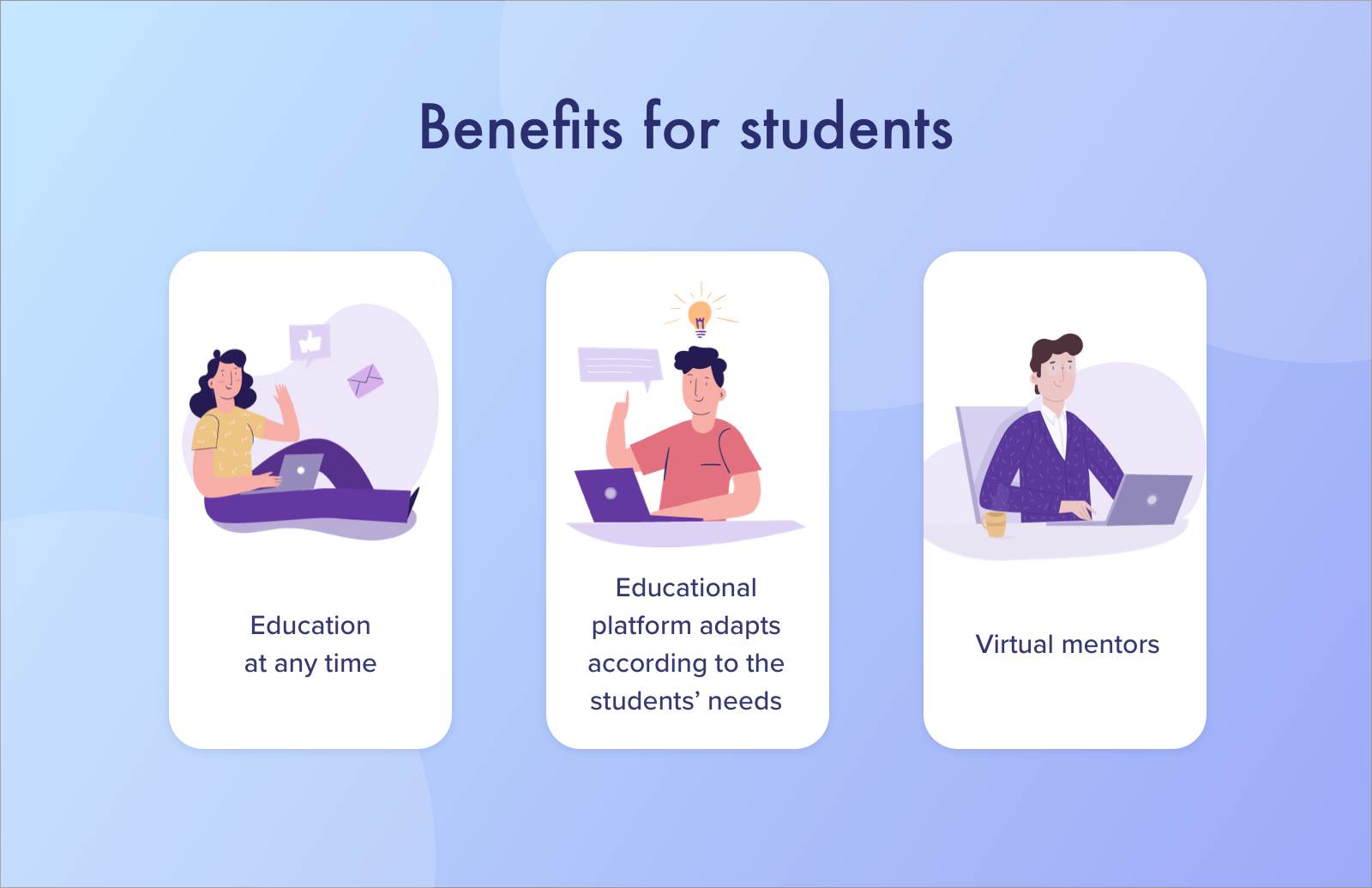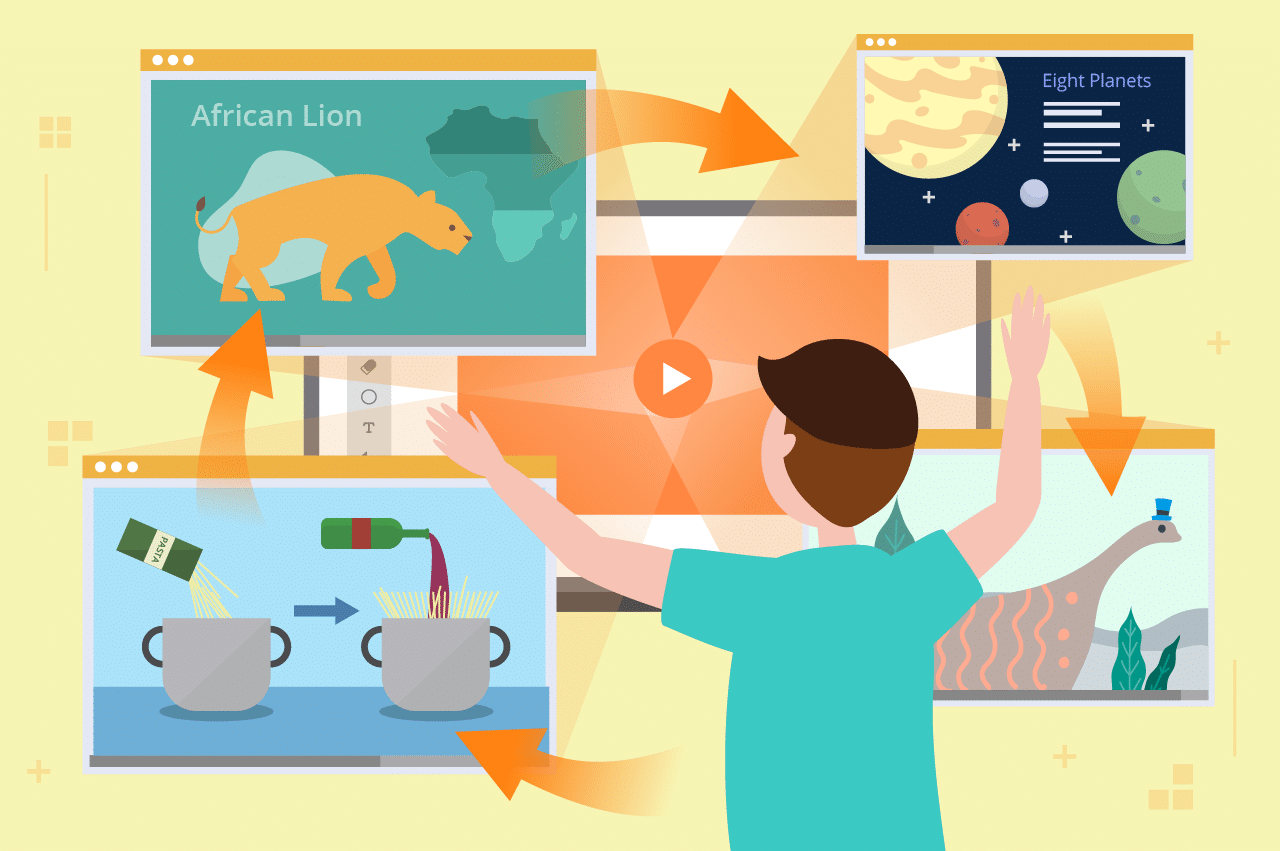
Online Learning: An Overview Of The Future Learning
Today’s newest and most popular kind of distance education is online learning. Over the last decade, it has had a substantial impact on postsecondary education, and the trend is anticipated to continue. The Internet’s arrival paved the way for distance online education to advance to the next level.
The Internet progressively determines how we live, socialize, teach, and learn in our daily lives. As the Internet becomes a more important educational tool, online education provides educators and students with access to a plethora of knowledge.

The purpose of e-learning is to reach and engage the modern learner one-on-one at any location worldwide. Students’ convenience and accessibility, increased degree completion rates, and the appeal of such courses to non-traditional students are all reasons why online courses are offered.
Similarly, the popularity of online courses is limited by a lack of faculty commitment as well as the expensive implementation and delivery costs. It’s vital to consider student characteristics while implementing online teaching and learning. Adult learners with full-time employment and family responsibilities may not benefit from strategies designed for traditional full-time students. These pupils are primarily pragmatic, having a strong interest in tools and technologies.
What Do Online Learning Imply?
Online teaching opens up tremendous possibilities for expanding the learning atmosphere for a wide range of students. College teachers may be requested to explore teaching their classes online as the demand for online education grows. While online teaching has many similarities to face-to-face instruction, it also has its own set of talents and prerequisites. The material of both approaches is comparable, with the exception of the tempo and presentation.
Learning is a multifaceted process that entails acoustic, optical, and tactile senses. Online learning is the digitalization of education via the Internet, also referred to as “e-learning” and other terms. This can also be recognised as a subset of “distance learning,” which refers to experience learning outside of the traditional classroom.
Online Learning Versus In-Person Classes.

Online learning is a flexible and adaptable format that may create transformative learning experiences for the learners – though it’s up to oneself, the educator, to put it into practice. On the other hand, in-person learning is the conventional mode of education, in which students attend scheduled face-to-face classes.
Since Both traditional and online learning institutions have their own pros and cons, one thing is sure: the demand for online education is growing. While conventional classrooms have some desirable social characteristics that can be lost in some online learning environments, some online virtual worlds do not. Teachers in regular in-person classes have more possibilities to interact with pupils more personally. When deciding between online and traditional programmes, it’s crucial to consider your particular learning style and scheduling requirements.
Let’s dive into and see what makes the latter different from the former.
Pros of E-learning
A pedagogical change in how we teach and learn is being catalyzed by online learning. There has been a surge in students enrolling in online programmes throughout the pandemic. What are the perks of online learning, with so many people choosing online degrees?
- Students benefit significantly from virtual classrooms due to their ease of use, with no restrictions on areas.
- Subjects and themes are easy to choose, and you’ll learn what you need to know while avoiding topics that aren’t necessary.
- Self-paced learning and flextime are both possible with online learning. Online learning is an excellent alternative for folks who dislike the formality of in-person classroom gatherings.
- Learning online can be less expensive than studying in person.
Drawbacks of In-person Classes
Traditional in-person learning has several drawbacks, one of which is that it is not always readily available. Here are some of the drawbacks of taking classes in person.
- In-person classes are more costly since professors can only educate a limited number of students at a time. Teachers must be compensated handsomely by students.
- Some students may find that their state university does not offer their subject of study, but moving away to college is out of their financial reach. Learning becomes inaccessible and ineffective as a result.
- Going to class might take a long time. Students are not given time flexibility, despite the fact that they must arrive on time. They must attend the lectures of the professors, or they will be removed from the class.
Online learning is a powerful and adaptable medium that may provide your students with transforming learning experiences – but it’s up to you, the instructor, to make it happen. Success in a traditional classroom does not ensure success in an online classroom. The purpose of both modes is the same – to assist students in developing information, skills, and understanding – but what works effectively in the classroom may be ineffective online and vice versa.
Tangible Benefits of Online Learning

Online learning involves both potential and obstacles. It offers time and space convenience, as well as cost-effectiveness and flexibility. Online distance learning caters to the demands of an ever-increasing number of students who are unable or unable to attend traditional classroom settings. It’s convenient because it allows you to learn from any place with an Internet connection.
Online courses can be accessed at any time of the day or night. The number of online programs has increased dramatically during the last decade. Though digital learning may not be suitable for everyone, it is considered cost-effective in some developing countries.
Some of the most important attributes of online education are as follows:
Enhanced Learning
More relevant debates, according to studies, emphasize writing skills, technical skills, and life skills like time management, autonomy, and self-discipline, as well as increased depth of knowledge and memory of course content.
Innovative Teaching
Student-centred methods; increased diversity and creativity in learning activities; accommodate varied learning styles; tweaks and enhancements can also be applied to on-the-ground courses.
Improved E-learning experience
Time to more thoroughly analyze student work; capacity to record and monitor online interactions; ability to handle grading online. The learning environment has improved due to increased engagement and conversation; there is less passive listening and more active learning, and there is a greater sense of connection and synergy.
Improvements in Online Education Due to Technological Advancements

It’s incredible how modern technology has influenced every aspect of our life, including online education. One of the most significant advantages of today’s online learning is that it makes education more accessible.
To use technological tools that may be required, students must be digitally competent. Students in the digital age appear to be more self-reliant, technology disciplined, and tech-savvy, making them well-suited to the online world. Online learning at your own pace is helpful for a high-quality college degree. Each course offering must fulfil the same stringent criteria and academic standards, whether delivered on campus or online. The only distinction is in the manner in which the course is available. In most cases, students must access a computer system with high-speed Internet connectivity.
The adoption of online learning provides us with some fascinating peeks into the future of digital education. Some of the features have been jotted down below.
E-CLASSES or Virtual classroom:
The virtual classroom is one of the primary aspects that has made E-learning possible. Learning is a huge realm for a child, and today’s children are more interested in gadgets; online learning via virtual classrooms has been shown to benefit children in need. The virtual classroom opens up a world of possibilities for making online education more engaging, effective, and inspiring.
Children of today’s digital era are losing interest in traditional classrooms that are not technologically equipped. Their learning curve has reached its pinnacle thanks to exposure to various additional learning platforms, including virtual classrooms and cloud computing that assist them with interactive learning sessions.
Video-Assisted Learning

What if, instead of simply giving students a YouTube video on any idea, there was a way to present students with new conceptual videos while receiving input from both students and instructors? It really does exist! Edpuzzle, PlayPosit, Vialogues, VoiceThread, and WeVideo are just a few apps and websites that offer this.
Learning Analytics
One of the most obvious benefits of incorporating new technology into online teaching and education is the Internet of Things (IoT). It is built on the concept of today’s smart devices’ more excellent connectivity. Teachers and students gain from the ability to communicate, share information, and have real-time access to the database they use.
The Internet of Things (IoT) connects smart gadgets and makes studying more convenient from anywhere and at any time. It increases student interest and participation. The ability to collect data rapidly and efficiently is one of the most significant advantages of the Internet of Things (IoT). Teachers can promptly design assignments, transmit them to students via apps, and manage, categorize, and analyze data using apps.
Virtual reality – Taking visual learning to new heights.
The use of virtual reality (VR) in online education is elevating students’ visual experiences to new heights. It is without a dispute one of the most potent digital teaching tools, capable of creating immersive lectures on a wide range of topics. Virtual reality (VR) provides visual and emotional stimuli, allowing students to have the most engaging learning experience. Because of its capacity to provide students with an immersive experience, VR can enhance online lectures on various themes and courses with real-life scenarios and experiences in a secure and controlled context.
Artificial intelligence – Education is becoming more digitally intelligent

The emergence of artificial intelligence (AI) in education is a major game-changer. The advancement of AI educational software allows students to have the most individualized learning experience possible. It gives students the quickest access to the information they need, with interactive elements that match their interests and learning style. AI holds promise for one-on-one online instruction and a more efficient self-paced learning experience.
Teachers can use modern software to keep track of their student’s progress and provide assistance and support. They may also change their lessons and approaches to tailor the learning content to the preferences and interests of their pupils to get better results. One of the most significant benefits of AI in education is enabling more personalized learning.
A customized blend of recommendations is developed based on the individual’s distinct preferences, interests, and decisions for the most fulfilling user experience. On a range of topics, students may quickly get the information they need.
The advent of Augmented Reality (AR) ushers in a new era of Immersive Learning.
Augmented reality (AR) is giving modern learning a fresh look. Studying is no longer restricted to memorization and comprehension of the material. Students can go deeper into the learning content by fully immersing themselves in their surroundings, thanks to augmented reality. Augmented reality is based on a combination of technology, real-world surroundings, and data.
In online and hybrid education programmes, augmented reality is used in conjunction with other technologies, features, and approaches. AR lets students explore and examine things and processes in minute detail in a completely safe and controlled environment. Apps for smartphones are one of the finest ways to incorporate AR. Teachers can use 3D models, geographical graphs, and other visual aids to help students understand the material.
Gamification
Gamification is a brilliant concept that combines video game elements with teaching approaches to keep students from becoming bored. Scenario learning is among the most popular formats in which online gamers must overcome numerous problems and objectives while doing activities to complete their missions. Students are given a puzzle to solve in dynamic polling and then vote on the scenarios and outcomes.
Wrapping up
Online education and learning are still in their infancy. It has been increasingly popular as an educational choice in recent years. Technological improvements focus on learning patterns and preferences in learning behaviour to create a customized environment and recommendations for pupils. The utilization of new technology in online teaching and education is removing learning barriers such as downtime and distance.
Students and teachers now have more opportunities to create the most customized study environment imaginable, thanks to more immersive lectures, successful exchanges, and a greater understanding of the learning content. Automation in education saves time and effort on routine tasks like taking notes, administering examinations, and building databases, allowing educators to focus on making learning more interesting, compelling and engaging for all students.

Comments